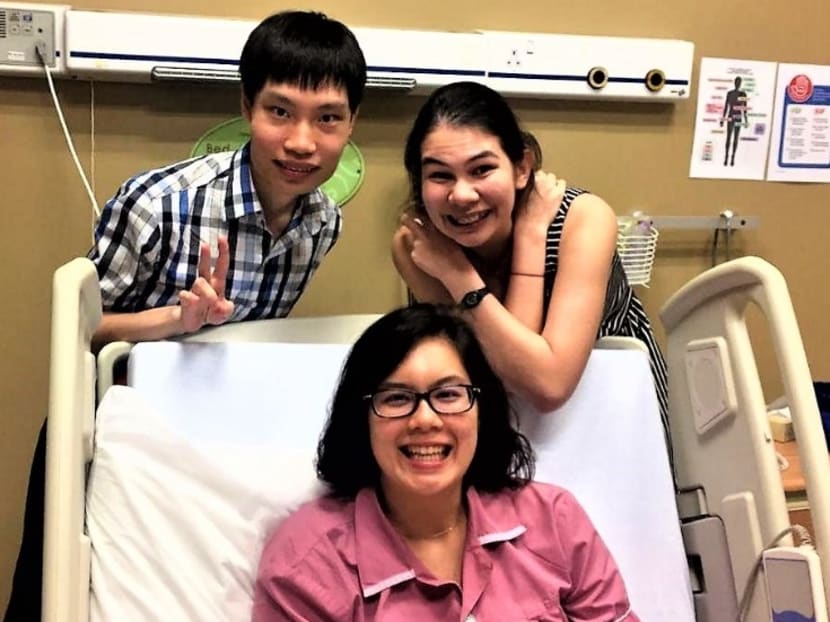Gen Y Speaks: From medical student to patient — this is my experience donating my stem cells
I don’t know about you, but when I receive email messages with subject titles such as “You are a match”, I either ignore or delete them. So when I got such an email early this year, I disregarded it, only to receive a call a week later from a bone marrow donor programme coordinator.
I don’t know about you, but when I receive email messages with subject titles such as “You are a match”, I either ignore or delete them. I don’t need matchmaking services.
So when I got such an email early this year, I disregarded it, only to receive a call a week later from a bone marrow donor programme coordinator. Only then did I realise that a stranger needed a part of me — not my heart though; just some stem cells.
I was shook. For my parents and their friends reading this, it means that I was shocked and excited.
I had sent in my cheek swab sample less than a year ago at a donation drive at Nanyang Technological University. From what I knew, most people wait years on the registry before they get called, if ever.
I hadn’t even planned on going for the drive in the first place as it was nearing my examinations and I was adequately stressed. However, my friend was the organiser and needed volunteers to recruit potential donors, so I agreed to help.
Throughout the day I shared that “there is only a one in 20,000 chance of being a match” about 50 times, without thinking much of it.
I sent in my cheek swab at the same time. I was still in disbelief when I met with the donor coordinator after her call. Within a couple of months, everything was settled — the paperwork, health checks, and donation itself.
Here are a few things I took away from the experience:
KNOWLEDGE
During my time in medical school, haematology (the study of blood) was never my strong point. Leukaemia, lymphoma, and all the other blood disorders were complex and difficult to understand.
But I hope to share with you what I learnt about blood disorders and how they can be treated, to encourage you to join the bone marrow registry and consider donation if you are found to be a match.
When someone has a blood disorder, their body produces too few, too many or abnormal cells. This can make one very sick because these cells are important for fighting infections, clotting blood and transporting oxygen, amongst many other functions.
Treatment options include chemotherapy, immunotherapy, or transplants. Transplants are sometimes the only hope for cure for the patients, but finding a match is not easy. Patients and donors must have a matching for Human Leukocyte Antigens, which is a specific protein in the body, different from the blood groups we are more familiar with in blood donation.
There are two main forms of transplants — stem cell, and bone marrow. I underwent the former. This required injections with growth factors so that my bone marrow could produce more stem cells.
Then, blood was taken, with the stem cells extracted and the rest of the blood returned to me. Honestly, it was a very simple process with minimal pain and side effects.
The bone marrow transplant involves general anaesthesia and using a special needle to extract bone marrow from the pelvic bone.
Again, this is quite straightforward. Both procedures may cause minor inconveniences to daily routine but they can potentially cure someone of an otherwise fatal disease.
EMPATHY
This was much emphasised in school. I like this quote by C. JoyBell — “Empathy is the ability to step outside of your own bubble and into the bubbles of other people”.
In practice though, this is difficult. Most of us have never been patients before. It takes emotional and sometimes even physical effort to put ourselves in another’s shoes.
I count myself fortunate in that this experience allowed me to catch a small glimpse of what it is like to be a patient, without actually being sick.
For instance, I learnt to inject myself with growth factors. This was an interesting experience and it made me think of my patients with diabetes who require insulin and do this daily.
I also got to try hospital food, had to be immobile in bed for hours, and even used the bed pan.
I felt bored while I was lying in bed and was often reliant on others for help, but I soon realised that this is the reality for many patients. I think that this experience helped me understand my patients better and I hope that it will make me a more compassionate person.
COURAGE
It is in my nature to overthink. Regretfully, this had caused me to hesitate before helping others in the past. My family was supportive throughout this journey but they also had their concerns, as we were all not familiar with the procedure and risks involved.
On reflection, helping another always requires some effort.
In some instances, it may need you to step out of your comfort zone, which can be a scary experience. However, I learnt that sometimes you have to put aside your fears and be bold, if this means you can help someone in need. My motivation was the thought of all the additional memories my recipient would have with his loved ones.
I never got to meet the uncle to whom I donated my stem cells. I probably never will. But I think of him sometimes and wonder what he’s up to, and hope that he is doing okay.
Looking back, maybe I did give a part of my heart after all.
ABOUT THE AUTHOR:
Marie Ann Wong graduated from the Lee Kong Chian School of Medicine at Nanyang Technological University in July this year.










